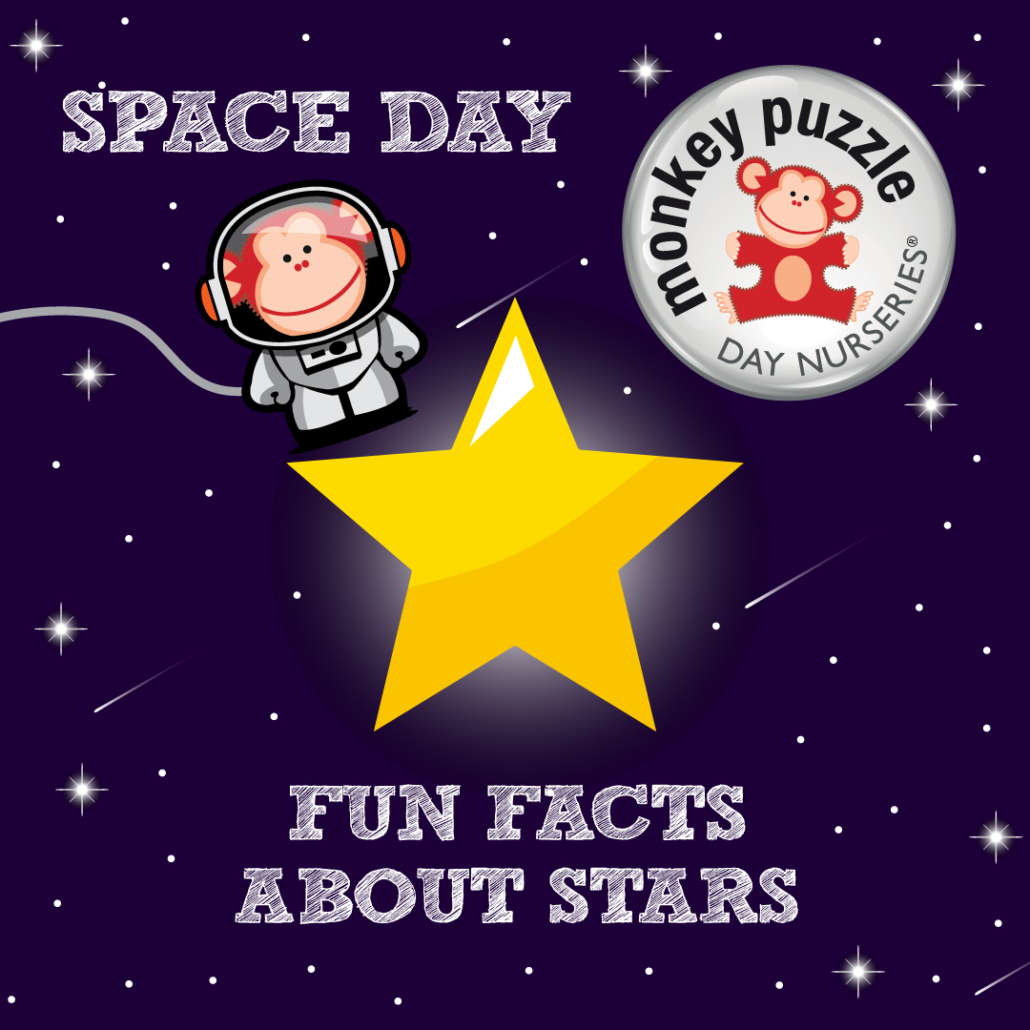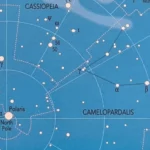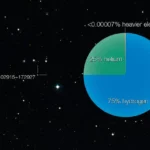Let’s talk about stars, those captivating celestial bodies that have amazed people for ages. We’ll venture into the cosmos, where we’ll learn about their dazzling colors, incredible sizes, and the enchanting ballet of binary and multi-star systems. Get ready for a stellar exploration filled with mind-bending facts and captivating tales that will spark your imagination and make you feel like you’re among the stars!
Fun Facts About Stars for Kids
Hey there, space explorers! Have you ever looked up at the night sky and wondered about those twinkling little dots? Those, my friends, are stars, and they’re way more amazing than you might think! Get ready for some seriously cool facts about these glowing giants:
- Stars are like giant balls of super-heated gas. Forget about landing on a star, there’s no solid ground! They’re made of stuff like hydrogen and helium, all heated up and glowing like crazy.
- Think of stars as enormous power plants. They don’t run on coal or solar panels, though. Stars create energy by smashing tiny hydrogen atoms together in a process called nuclear fusion. It’s like a super-duper powerful nuclear reaction that lights up the universe.
- Stars aren’t just one color, they come in a rainbow of shades! And guess what? The color tells us how hot they are. Blue stars are the hottest, like scorching furnaces. White stars are a bit cooler, then it goes yellow, orange, and finally, red stars are the coolest of the bunch.
- Stars are real survivors, some living for billions of years! To put that in perspective, that’s way, way longer than dinosaurs roamed the Earth.
- Stars can be quite social. Forget about living alone, lots of stars have buddies! They hang out in pairs or even big groups we call star systems. Imagine having that many neighbors!
- Sometimes, stars go out with a bang! When a star gets old and runs out of fuel, it can explode in a massive supernova. These explosions are so bright they can outshine entire galaxies! Plus, they create the materials that form brand-new stars and planets. It’s like the circle of life but on a cosmic scale!
- Even stars have to be born somewhere. They form inside giant clouds of gas and dust, kind of like cosmic nurseries. As more and more stuff clumps together, the cloud gets so dense and hot that a star ignites!
- And guess what? Our very own Sun is a star too! It’s a pretty average-sized yellow star, but it’s super important to us. It gives us light, warmth, and makes life on Earth possible. So next time you see the Sun, give it a big thank you!
So there you have it, future astronauts and space enthusiasts! We hope you enjoyed these fun facts about stars. Remember, there’s always more to discover in the vast universe, so keep looking up at the night sky and let your curiosity soar!
How Hot Are Stars – Exploring the Scorching Temperatures of Distant Suns
We already know those twinkling stars in the night sky are actually giant balls of burning gas, right? But have you ever wondered just how hot they get? Believe me, it’s way hotter than a summer day here on Earth!
Let’s take our Sun as an example. Its core blazes at an astounding 27 million degrees Fahrenheit (15 million degrees Celsius)! This intense heat is generated by nuclear fusion reactions happening at its core, where hydrogen atoms are constantly colliding and fusing to form helium, releasing tremendous amounts of energy. Luckily for us, the surface of the Sun is a bit cooler, around 9,940 degrees Fahrenheit (5,505 degrees Celsius). That’s still pretty toasty, but it’s what allows life to thrive here on Earth. And here’s the kicker: the Sun’s outermost layer, called the corona, can spike up to a mind-blowing 3.6 million degrees Fahrenheit (2 million degrees Celsius)! Why the corona is so much hotter than the surface is still a mystery that scientists are trying to unravel.
Now, you might think the Sun’s temperature is constant, but it actually fluctuates depending on its activity levels. These fluctuations can actually impact our climate here on Earth! Scientists study these solar cycles to understand how they might affect us.
But here’s the thing: not all stars are created equal. Some burn way hotter than others. Blue stars, for instance, are like the rockstars of the universe, blazing at incredibly high temperatures. These stars are massive and live fast-paced lives. Red stars, on the other hand, are more like the cool kids in the back of the class, burning at much lower temperatures. They are smaller and live much longer lives.
The reason stars are so hot boils down to a process called thermonuclear fusion. This is where hydrogen atoms inside the star’s core collide at super high speeds due to immense gravitational pressure, fusing to form helium and releasing massive amounts of energy in the form of heat and light. It’s like a never-ending fireworks show happening millions of miles away!
Think about it: those tiny twinkling stars we see at night hold the keys to understanding how galaxies form and how new planetary systems are born. It’s mind-blowing stuff! The more we learn about these celestial giants, the more we unravel the mysteries of the vast universe we call home.
Why Do Stars Twinkle – Unraveling the Mystery Behind Their Shimmering Light
Ever gazed up at the night sky and wondered why those distant suns seem to blink on and off like celestial fireflies? It’s captivating, isn’t it? This twinkling effect, also known as stellar scintillation, has a fascinating explanation rooted in the way their light interacts with our own planet’s atmosphere.
We see stars because their immense energy, generated by nuclear reactions deep within, travels across vast distances to reach our eyes. But the journey doesn’t end there. Before starlight reaches us, it has to pass through Earth’s atmosphere—a protective blanket of air that isn’t as uniform as it appears.
Imagine our atmosphere as a giant swimming pool. When you look at something at the bottom of the pool, it might seem to ripple and dance. This happens because the water isn’t perfectly still, and the light bends as it passes through these moving layers.
The same principle applies to starlight! Earth’s atmosphere is made up of layers with different temperatures and densities, each acting like a slightly different density of water in our pool analogy. As starlight zips through these layers, its path is slightly altered—a phenomenon called refraction. These constant, tiny bends in the light path cause the star’s apparent position to jiggle ever so slightly, making it appear as if it’s twinkling!
Interestingly, planets don’t usually twinkle. Being much closer to us than stars, their light travels through less of the Earth’s turbulent atmosphere. Think of it like looking at a streetlight through a thin curtain—it might appear slightly blurry, but it won’t blink on and off like a distant star viewed through a thick window on a stormy night.
The next time you find yourself mesmerized by the twinkling night sky, remember that you’re witnessing a beautiful interplay of physics and perception. It’s a reminder that even something as seemingly simple as starlight can reveal fascinating secrets about the universe—and our place within it.
How Far Away Are Stars – Journeying Through the Vast Cosmic Distances
We’ve talked about how incredible and huge our universe is, but how do we actually know how far away stars are? It’s mind-boggling to think about, right? Let’s dive into the clever ways astronomers measure these incredible distances.
One way is by using a method called parallax. Think of it like this: close one eye and hold your thumb up at arm’s length. Now, switch eyes. Notice how your thumb seems to jump against the background? That’s parallax in action!
Astronomers use a similar trick with stars. They observe a star from two different points in Earth’s orbit around the Sun, six months apart. The tiny shift in the star’s apparent position against the background of more distant stars is its parallax angle. The smaller the parallax, the farther away the star. Using some trigonometry magic, they can calculate the star’s distance from Earth.
Now, measuring distances across the universe requires some seriously big measuring sticks! We use light-years – the distance light zips through space in a whole year. That’s a whopping 5.88 trillion miles! And for distances that make even light-years seem small, we use parsecs. One parsec equals about 3.26 light-years. It’s like using miles versus kilometers, but on a cosmic scale!
But wait, there’s more! Some stars act like cosmic lighthouses, pulsing with a regular rhythm. These are called Cepheid variable stars, and their brightness changes predictably over time. Here’s the cool part: the brighter the Cepheid, the slower it pulses. Astronomers have figured out a relationship between a Cepheid’s pulsation period and its intrinsic brightness. By comparing a Cepheid’s observed brightness to its known intrinsic brightness, astronomers can calculate its distance. It’s like using a light bulb’s wattage to figure out how far away it is – dimmer means it’s farther away!
Finally, there’s the spectroscopic redshift. Imagine the sound of an ambulance siren. As the ambulance races away, the siren’s pitch seems to stretch out and get lower. Light waves from distant galaxies do something similar. As the universe expands, the light waves from these galaxies get stretched out, shifting towards the red end of the spectrum. This is called redshift. By measuring how much the light has redshifted, astronomers can estimate the galaxy’s distance.
It’s incredible to think that we can measure the vast distances to stars and galaxies using these ingenious techniques. It’s a testament to human curiosity and our desire to unravel the mysteries of the universe!
Speaking of fascinating celestial objects, did you know that constellations are not just pretty patterns in the sky? Fun facts about them will blow your mind! And did you know stars are more than just specks of light? Discover amazing facts about stars that will change your perspective forever.
- Unveiling Bernhard Caesar Einstein’s Scientific Achievements: A Legacy in Engineering - July 15, 2025
- Uncover who is Jerry McSorley: CEO, Family Man, Business Success Story - July 15, 2025
- Discover Bernhard Caesar Einstein’s Scientific Contributions: Unveiling a Legacy Beyond Einstein - July 15, 2025















